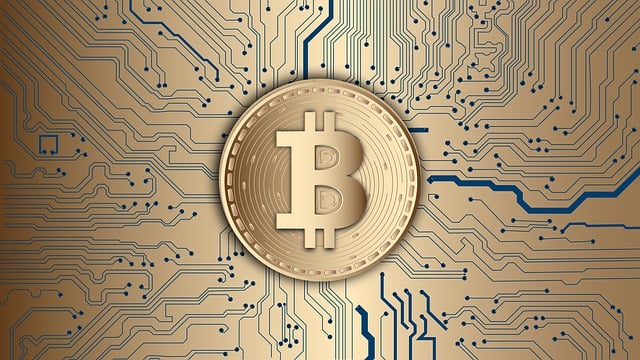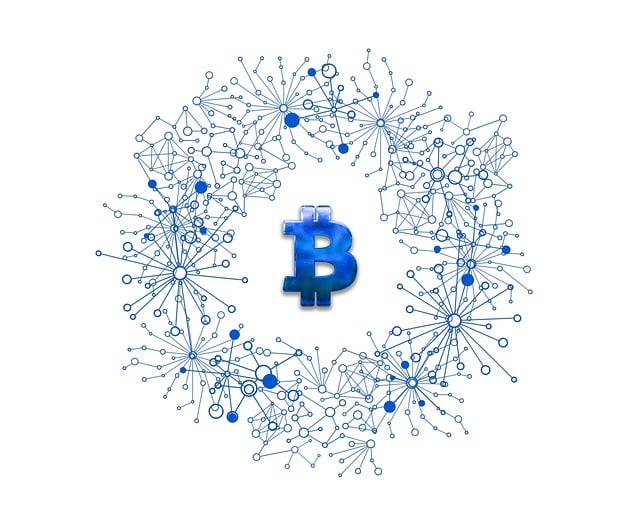Bitcoin and decentralized finance (DeFi) have formed a symbiotic relationship, where DeFi leverages Bitcoin's secure base layer to offer innovative financial applications like decentralized exchanges, lending protocols, and yield farming. This alliance has fostered a vibrant ecosystem that enables users to engage in complex financial activities without traditional intermediaries, reshaping the global financial landscape. As DeFi gains traction, its impact on Bitcoin's price dynamics becomes increasingly significant, highlighting DeFi's crucial role in the future of finance and its profound effect on market adoption.
“The ever-evolving world of decentralized finance (DeFi) is reshaping the landscape of traditional finance, and Bitcoin, as the pioneering cryptocurrency, is at the center of this revolution. This article explores the intricate relationship between Bitcoin and DeFi, delving into how DeFi protocols are influencing its price and global adoption. By analyzing market trends and recent innovations within DeFi, we predict potential scenarios for Bitcoin’s future value in a post-DeFi era, highlighting the profound impact of this financial reshaping.”
- The Current State of Bitcoin and DeFi Integration
- – Examining the relationship between Bitcoin and decentralized finance (DeFi)
The Current State of Bitcoin and DeFi Integration

Bitcoin, often referred to as digital gold, has been making headlines for its dramatic price fluctuations and growing acceptance as a legitimate investment. The current state of Bitcoin is closely tied to the rapid integration of decentralized finance (DeFi), which is reshaping the financial landscape. DeFi’s role in this transformation is significant; it offers a more inclusive and transparent alternative to traditional finance, allowing users to borrow, lend, and trade assets without intermediaries.
As DeFi continues to evolve, its integration with Bitcoin has become more pronounced. Decentralized exchanges, for instance, enable peer-to-peer trading of Bitcoin and other cryptocurrencies, enhancing liquidity and accessibility. Furthermore, DeFi protocols provide innovative lending and borrowing mechanisms, allowing investors to earn interest on their Bitcoin holdings or take leverage to amplify potential gains. This symbiotic relationship between Bitcoin and DeFi is driving new levels of adoption and interest in the cryptocurrency market.
– Examining the relationship between Bitcoin and decentralized finance (DeFi)

Bitcoin, often hailed as the pioneer of digital currencies, has an intricate relationship with decentralized finance (DeFi). As DeFi continues to reshape the financial landscape, its integration with Bitcoin is becoming increasingly significant. DeFi’s role in democratizing access to various financial services and products aligns perfectly with Bitcoin’s underlying principles of decentralization and peer-to-peer transactions. The two entities have a symbiotic connection; Bitcoin provides the secure and anonymous base layer for transactions, while DeFi builds upon it, offering innovative applications like decentralized exchanges (DEXs), lending protocols, and yield farming opportunities.
This synergy has led to the growth of a vibrant ecosystem where users can participate in complex financial activities without traditional intermediaries. As DeFi expands, it attracts more investors seeking alternative investment options, potentially impacting Bitcoin’s price dynamics. The interdependence between Bitcoin and DeFi underscores the ongoing evolution of the cryptocurrency space, suggesting that their combined influence will play a pivotal role in shaping the future of global finance.
As we’ve explored, the integration of Bitcoin with decentralized finance (DeFi) is a game-changer in the world of digital currencies. This symbiotic relationship has not only enhanced Bitcoin’s utility but also underscored its potential as a revolutionary force in reshaping the global financial landscape. DeFi’s innovative applications leverage Bitcoin’s security and decentralization, promising to democratize access to financial services and foster greater economic participation worldwide. While price predictions remain speculative, the dynamic interplay between these two forces is sure to continue shaping—and challenging—traditional financial systems.
